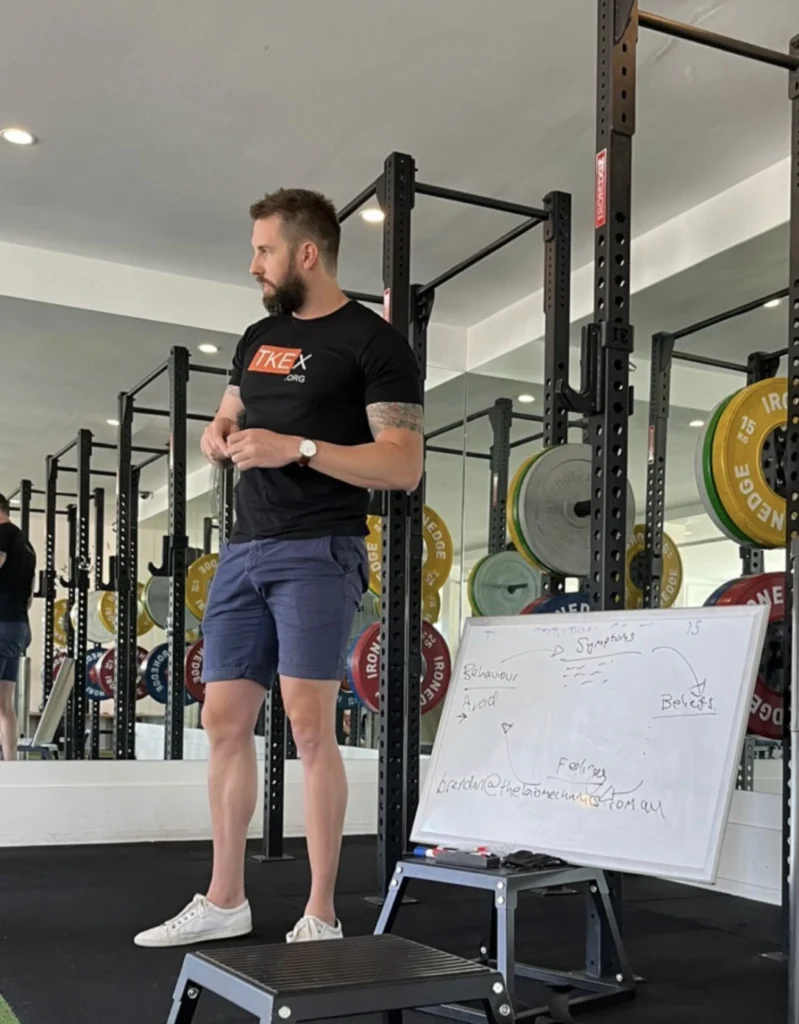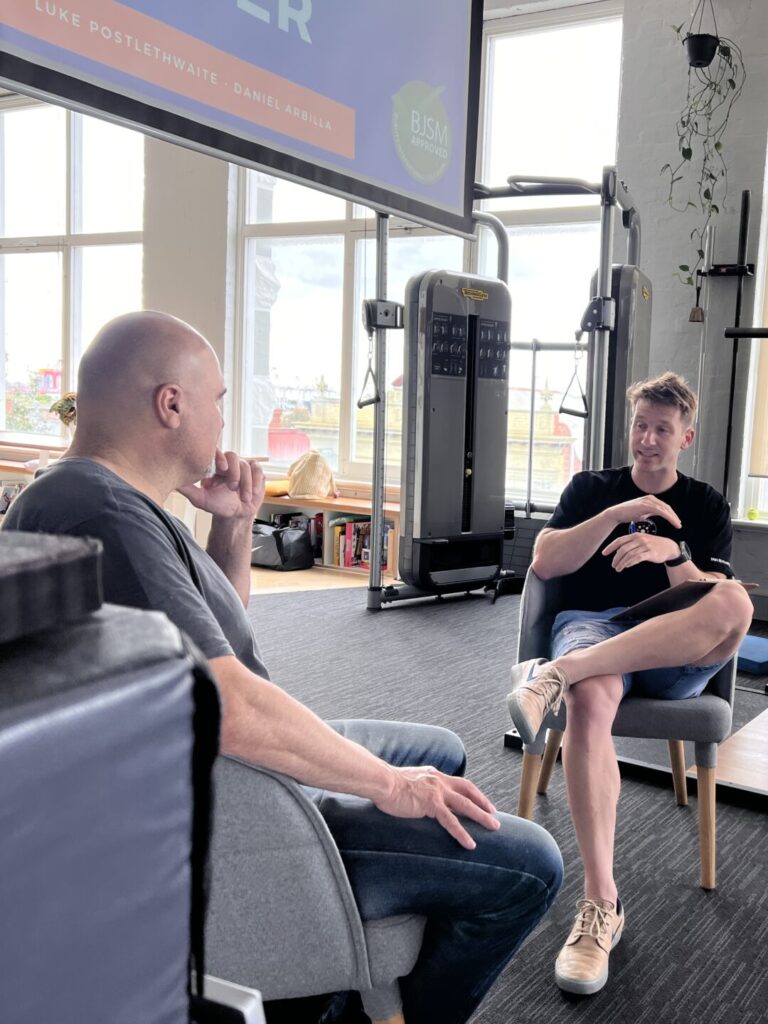
Location: Københavns Professionshøjskole,
Sigurdsgade 26, Copenhagen, Denmark
Dates: 30th September – 1st October, 2023
Pre-learning available
Price: $799 AUD
Students: $599 AUD (discount code: Stud)
Course description
Pain, perception, and movement, in a biopsychosocial framework is a comprehensive course for healthcare and movement professionals who work with people experiencing pain or people aiming to develop their movement capacity.
Participates will learn how to evolve their practice and apply this knowledge in the clinic to better meet the needs of their clients. The course covers the most recent theories on perception and action, enabling clinicians to reframe clinical interactions and client strategies and enhance client outcomes.
Participants will also learn a framework for organising complex human experiences and develop coherent, values-driven strategies with clients to move towards recovery. The use of movement and physical activity in people with pain is explored, including motivational interviewing skills and elements of Acceptance and Commitment Therapy (ACT) and Cognitive Behavioural Therapy (CBT).
Real client examples are provided throughout the course to maximise learning outcomes. Modules also focus on communication skills, providing strategies and techniques to engage clients in their recovery.
This course provides clinicians with a fresh perspective on using movement in their practice and offers exciting new strategies to help their clients achieve their goals. Don’t miss out on this opportunity to advance your career and make a real difference in the lives of those you help – we would love to see you there!
Whether you’re a physiotherapist, Pilates or yoga instructor, all healthcare and movement professionals are welcome to join – we guarantee it will change how you practice.
Curriculum
What you'll learn in this course
Section 1 - Welcome
In this section, we want to know just a bit about you, your goals, and what drives you to do what you do! We will also give you a bit of a background about what motivates us to bring you these courses and what you can expect.
That’s when we get stuck into it.
Let’s talk about critical thinking and logic. Imagine if the people we were seeing in the clinic weren’t improving for the reasons we thought they were. Wouldn’t you want to know what the active ingredients were so you could leverage those components and drop anything else that may be getting in the way of a person’s recovery?
That’s what we will explore in this section and much more. We promise you will find this section thought-provoking!
Introductions (13:20)
Navigating the platform (4:58)
Definitions, philosophical frameworks & critical thinking (21:24)
Section 2 - Pain science and Biopsychosocial practice
In this module we discuss the basics of the physiology that underpins tissue injury and pain, and how bio, psycho, and social factors can influence this biology. We then explore how our practice can evolve to reflect this science, and how we can apply this knowledge in the clinic.
The fundamentals of pain science (25:39)
A closer look at the biology (12:38)
Tissue injury and pain (7:26)
Placebo and Nocebo (25:48)
Biopsychosocial practice (15:17)
Casual Conversations – 2 (20:47)
Section 3 - Red Flags
Although statistically, we may not see high volumes of it, serious pathology that requires specific support and referral is likely to be something you come across in your career. Remaining vigilant and having a solid grasp of the signs and symptoms that may indicate something more sinister is going on is imperative to being a good clinician. Here, we provide a brief refresher to ensure you’re comfortable with these concepts.
Red flags (13:51)
Section 4 - Predictive processing
Think about this for a second. Your brain is encased in darkness yet right now you can see light… maybe you can even feel that light. Have you ever considered that the light that you see is nothing more than electrical impulses pulsating through your brain, being organised, and constructed based on your best guesses on what the light hitting the sensors in your eyes means? Is this the same as the sensory information coming from that painful body part?
In this module, we explore our most prominent cognitive neuroscientific theory for perception and action, how we can use this to reframe our clinical interactions, have empathy for differing perceptions and behaviours, and how we can leverage this knowledge to enhance client outcomes.
An introduction to perception
A Bayesian perspective
Perception and action
Section 5 - Them common sense model to illness perception
Clients seek help because they have an issue. They attend with a set of beliefs and thoughts and feelings about their condition and future. They act and behave in certain ways to serve their survival needs. And all these factors can be complex and difficult to comprehend as an outsider (e.g., a clinician aiming to help).
In this module, we explore a useful framework for organising complex human experiences. The framework will enable you to navigate and develop, with the client, a coherent, values-driven, set of strategies to move towards recovery.
The model and its applications in the clinic
Section 6 - Movement, play, the free energy principle, and psychological affect
Building on all the theory and concepts that you’ve learnt so far, we now dive into applying movement and physical activity to people with pain. In this section, we explore setting up movement experiments for people to safely test their capacity, grading load, and considering other biopsychosocial factors. Importantly, we tie this into the science about how we feel, how we behave, and what motivates us to move and act within our environment.
You’ll come out of this module with a fresh perspective on using movement in your practice, and excited to explore some new strategies.
Section 7 - Practical communication skill
The hallmark of a good practitioner is the ability to have a client feel heard, validated, and motivated to engage in their recovery. This section leans on motivational interviewing skills, elements of Acceptance and Commitment Therapy (ACT), and Cognitive Behavioural Therapy (CBT), to ensure you can maximise your client outcomes.
This is all exemplified with real client examples to maximise your learning outcomes!
Often, people see communication skills as a bit airy-fairy, but we guarantee you will be excited about exploring different strategies and techniques in your practice once you finish this section.
Section 8 - Some final words
In this final module we summarise the importance of what you’ve learnt, the strategies you can use to implement what you’ve learnt, and the support and resources you can access to continue your journey.
About Brendan Mouatt
Brendan is a practising Accredited Exercise Physiologist and a Director of The Knowledge Exchange and of The Biomechanics – two multi-disciplinary practices in Australia.
He has a keen interest in perceptual and behavioural science, which led him to pursue a Master of Research degree. During his research, he investigated how visual sensory information using virtual reality and interoceptive accuracy affects a person’s perceptions of effort and affect during stationary cycling exercise.
Brendan’s master’s research, combined with his extensive clinical experience working as an Exercise Physiologist in the musculoskeletal injury and pain field, inspired him to pursue a PhD. His doctoral research focuses on how beliefs, behaviours, and perceptions (especially during clinical interactions) impact patients’ recovery from pain and their future healthcare service use.
Since 2012, Brendan has been teaching in the tertiary education system and providing continuing education courses nationally and internationally through The Knowledge Exchange. Brendan is dedicated to improving the translation of research into practice, and his experience and expertise make him a valuable contributor to the academic and clinical communities.


About Luke Postlethwaite
Luke Postlethwaite is an accredited exercise physiologist and sport scientist with a passion for pain science research and education. He completed his Master’s degree in Clinical Exercise Science and Rehabilitation at Victoria University and put his learnings into practice immediately.
Luke then went on with Brendan to develop The Knowledge Exchange, to educate health practitioners, doctors, and corporations on contemporary pain science and ethical healthcare. He brings in global experts to share their knowledge and promote a client-focused healthcare model.








